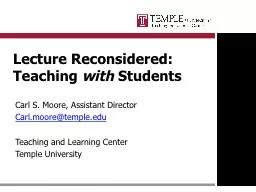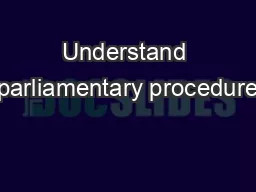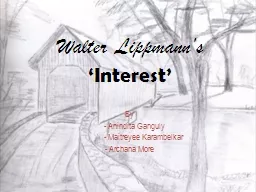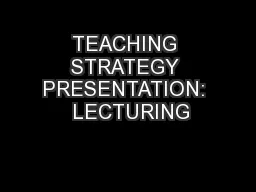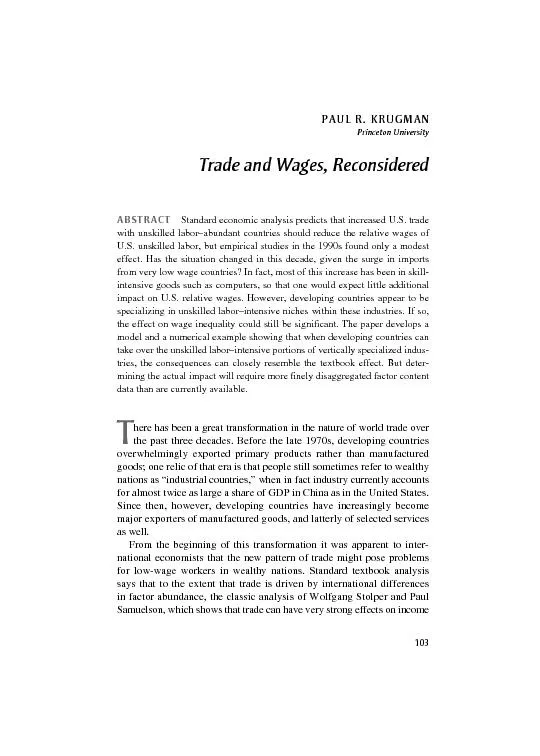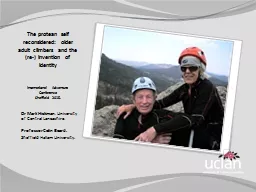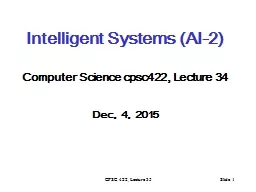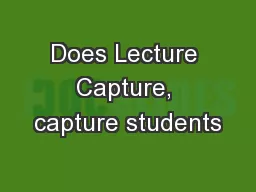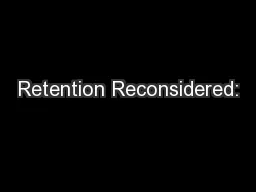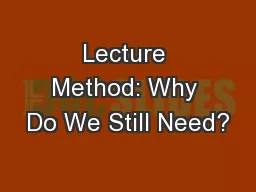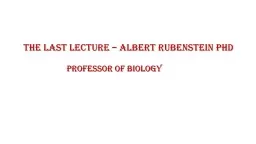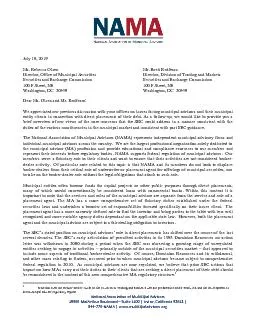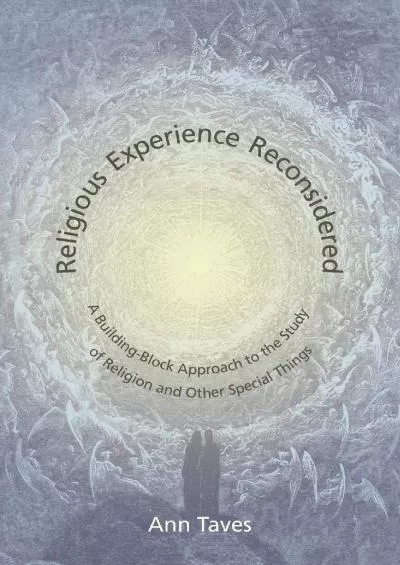PPT-Lecture Reconsidered: Teaching
Author : sherrill-nordquist | Published Date : 2016-06-29
with Students Carl S Moore Assistant Director Carlmooretempleedu Teaching and Learning Center Temple University Wood D Bruner J S amp Ross G 1976 The Role of Tutoring
Presentation Embed Code
Download Presentation
Download Presentation The PPT/PDF document "Lecture Reconsidered: Teaching" is the property of its rightful owner. Permission is granted to download and print the materials on this website for personal, non-commercial use only, and to display it on your personal computer provided you do not modify the materials and that you retain all copyright notices contained in the materials. By downloading content from our website, you accept the terms of this agreement.
Lecture Reconsidered: Teaching: Transcript
Download Rules Of Document
"Lecture Reconsidered: Teaching"The content belongs to its owner. You may download and print it for personal use, without modification, and keep all copyright notices. By downloading, you agree to these terms.
Related Documents

